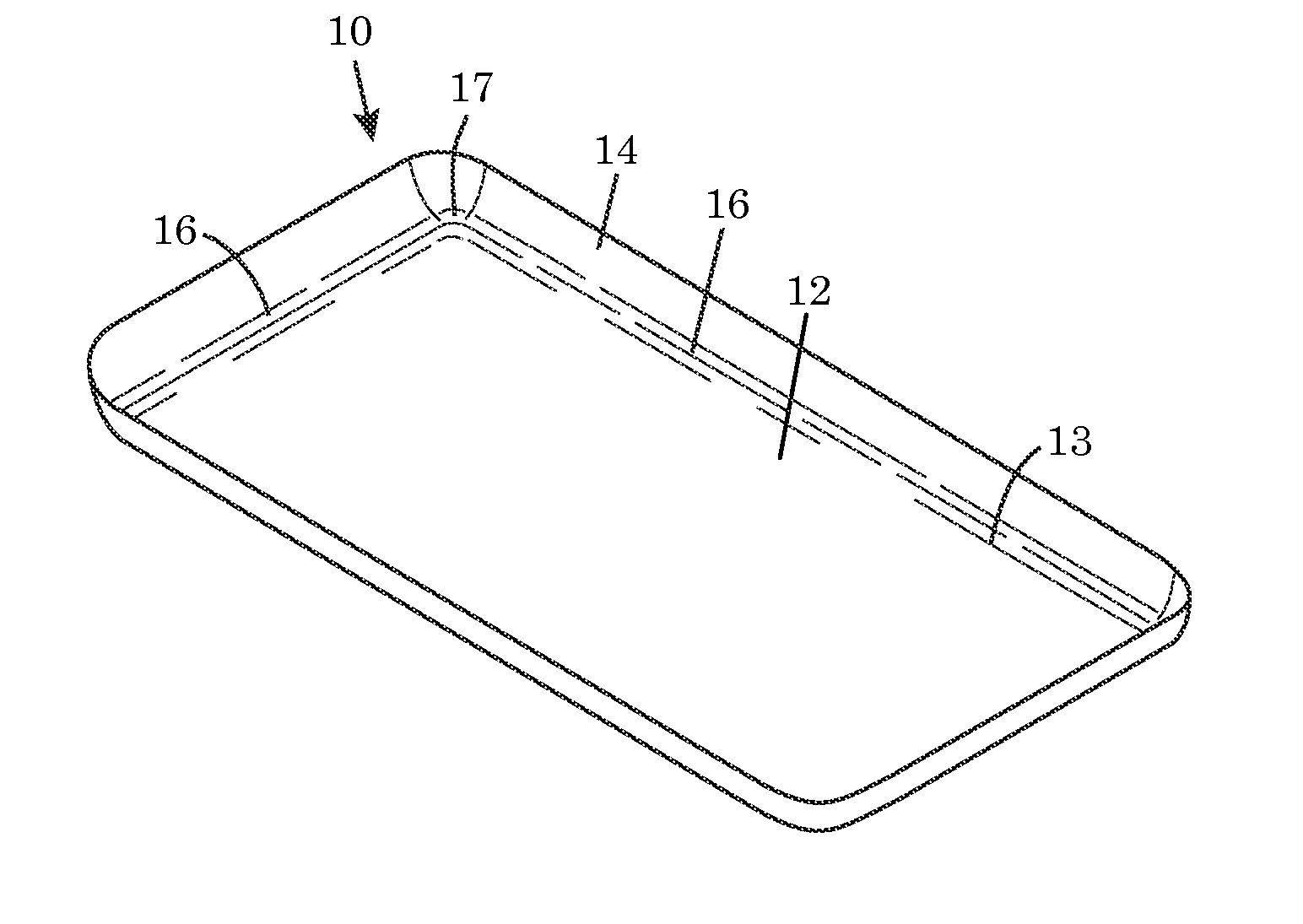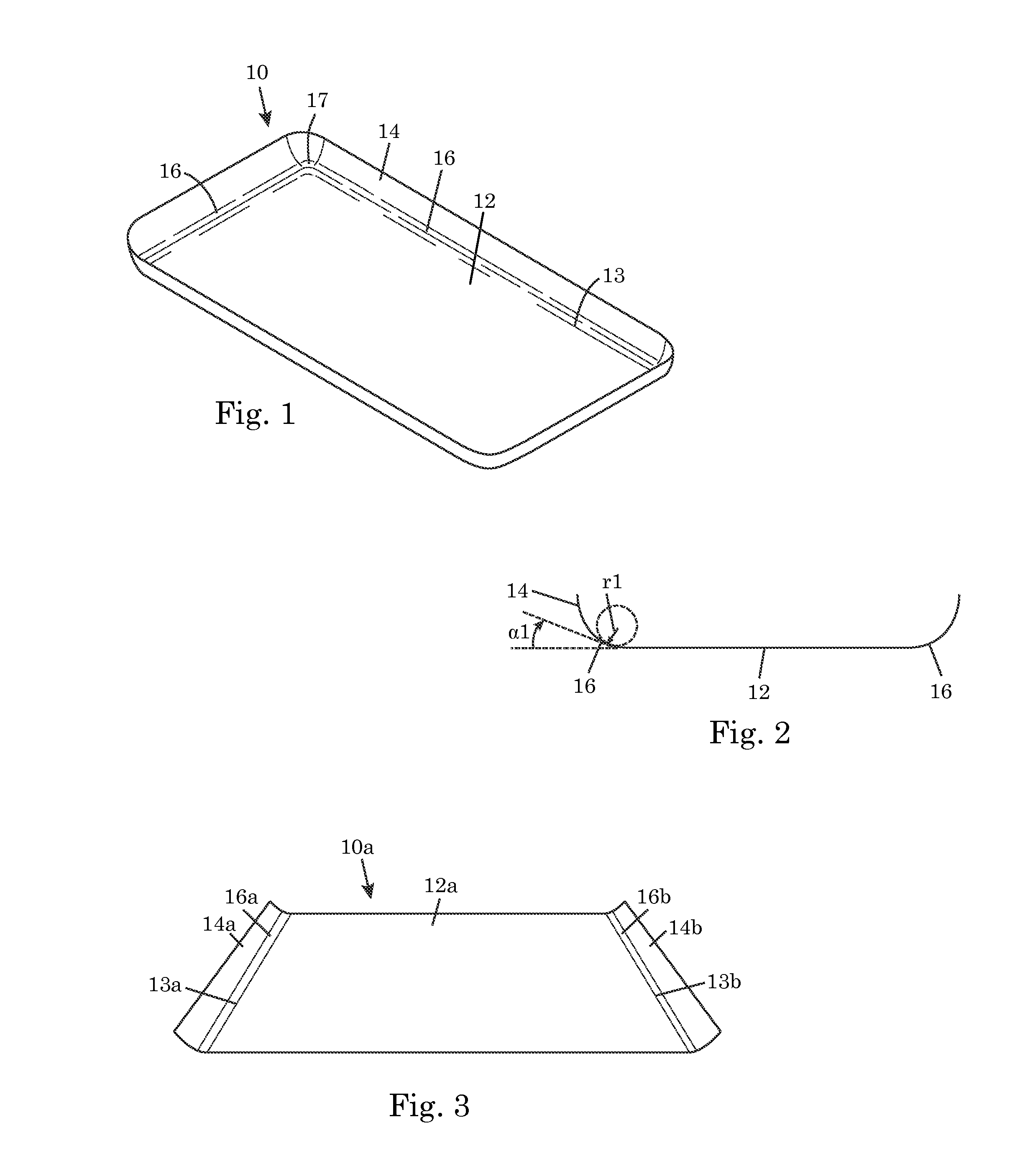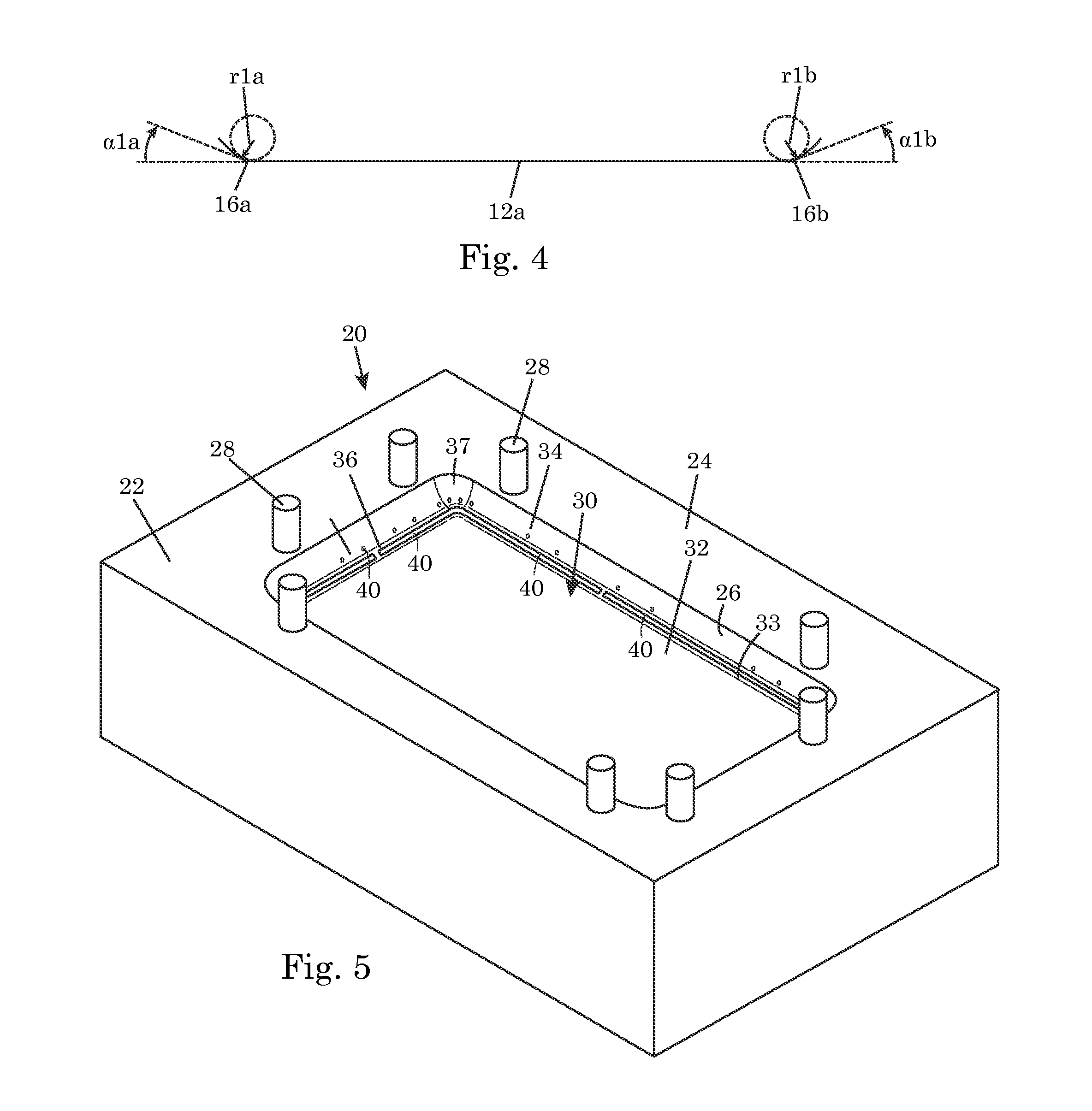Method and system for forming shaped glass articles
a technology of shaped glass and machining method, which is applied in the direction of glass tempering apparatus, manufacturing tools, instruments, etc., can solve the problems of increasing cost, increasing the difficulty of difficult to remove total machining marks with polishing, so as to reduce the life of shaped glass articles, avoid undesirable pitting and staining of the flat area of the glass surface, and reduce the cost
- Summary
- Abstract
- Description
- Claims
- Application Information
AI Technical Summary
Benefits of technology
Problems solved by technology
Method used
Image
Examples
example 1
[0096]A shaped glass article was formed using a mold with a dish-shaped mold cavity. The forming process included local heating of the bend area without active cooling of the mold surface flat area. Various profiles characterizing the process are shown in FIG. 12. The thermal profile at the center of the mold surface flat area is shown at 100. The thermal profile at a bend on the mold surface curved area is shown at 102. The thermal profile at a corner on the mold surface curved area is shown at 104. The vacuum profile is shown at 106. The furnace power profile is shown at 108. The furnace temperature profile is shown at 110. The time at which the furnace was opened is indicated at 112. The temperature difference between the mold surface flat area (represented by thermal profile 100) and the mold surface curved area (represented by thermal profile 102 or 104) is relatively small. The temperature difference between the mold surface flat area and the mold surface curve area peaks at a...
example 2
[0097]A shaped glass article was formed using a mold with a dish-shaped mold cavity. The forming process include local heating of the bend area with active cooling of the mold surface flat area. Various profiles characterizing the process are shown in FIG. 13. The thermal profile at the center of the mold surface flat area is shown at 114. The thermal profile at a point on the mold surface curve area is shown at 116. The thermal profile at the center of the glass flat section is shown at 118. The thermal profile at a point on the glass curved section is shown at 120. The vacuum profile is shown at 122. The furnace power profile is shown at 124. The furnace temperature profile is shown at 126. The active cooling profile is shown at 128. Nitrogen was used as the cooling fluid. The time at which the furnace was opened is indicated at 130. The temperature difference between the mold surface flat area (represented by thermal profile 114) and the mold surface curved area (represented by t...
example 3
[0098]Various dish-shaped glass articles were formed using a mold with a dish-shaped mold cavity. Local heating of the mold surface area and active cooling of the mold surface flat area were employed in the process. The glass articles were made from Code 2317 GORILLA® glass available from Corning Incorporated. The glass sheets used in making the glass articles had a thickness of 0.8 mm. The dish shape had a bend radius of 10 mm. The effect of mold corner temperature on corner deviation of the formed shape from the ideal shape was investigated by varying the temperature in the mold surface bend area. The results are shown in FIG. 14. In FIG. 14, the diamond markers 140 represent DOE (“design of experiments”) data and the square markers 141 represent the final process data. The data shows that increased mold bend temperature resulted in reduced deviation from ideal shape, thus demonstrating the importance of increasing edge and corner temperatures. For the particular glass composition...
PUM
| Property | Measurement | Unit |
|---|---|---|
| viscosity | aaaaa | aaaaa |
| viscosity | aaaaa | aaaaa |
| glass viscosity | aaaaa | aaaaa |
Abstract
Description
Claims
Application Information
 Login to View More
Login to View More - R&D
- Intellectual Property
- Life Sciences
- Materials
- Tech Scout
- Unparalleled Data Quality
- Higher Quality Content
- 60% Fewer Hallucinations
Browse by: Latest US Patents, China's latest patents, Technical Efficacy Thesaurus, Application Domain, Technology Topic, Popular Technical Reports.
© 2025 PatSnap. All rights reserved.Legal|Privacy policy|Modern Slavery Act Transparency Statement|Sitemap|About US| Contact US: help@patsnap.com



